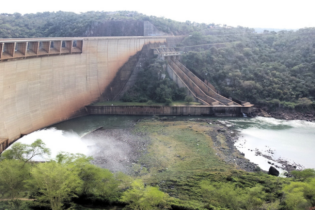Following the recent devastating storm and floods in the EThekwini Metropolitan Municipality, the Department of Environmental Affairs (DEA) ran a two-day (5-6 May 2019) clean-up activity.
This took place at various beach and harbour sites around Durban. The DEA re doing this in partnership with the EThekwini Metro, Durban, Coca Cola, Durban Green corridor, DEA’s working on Fire (WoF), academic institutions and other stakeholders. These activities form part of the Presidential Good Green Deeds Campaign which is aimed at galvanizing communities to take part in the protection of the environment, cleaning-up and greening of their neighborhoods and changing people’s attitudes and behaviors towards responsible management of waste. Resulting from the heavy rains and floods, Durban beaches and the Port of Durban were swamped with marine debris – mostly plastic. As part of the department’s response to the litter problem, which is not only unsightly but also life threatening to marine life, about 500 volunteers focused their attention on six sites around Durban. Among the volunteers were 100 firefighters from the Department’s Working on Fire (WoF) programme in KwaZulu-Natal.They were not only part of the environmental clean-up in Durban, but some of them were also affected by the recent floods and had their properties either damaged or destroyed.
WoF has also placed around 700 firefighters on alert to provide support to the provincial disaster management centre in KwaZulu-Natal. Through programmes such as Working for Water, Working for Wetlands and Working on Fire, the department has contributed significantly towards the rehabilitation of catchments and wetlands, thus providing ecological services such as flood attenuation. Rehabilitation of wetlands is key to ensuring that this type of green and ecological infrastructure is fully able to provide a range of services including water provision, regulations, purification, ground water replenishment, nutrients and soil retention. Further intervention that need scaling up include the design of rain water harvesting system to be part of development and/or employ retrofitting of innovative water conservation technologies for water harvesting and grey water reuse.







